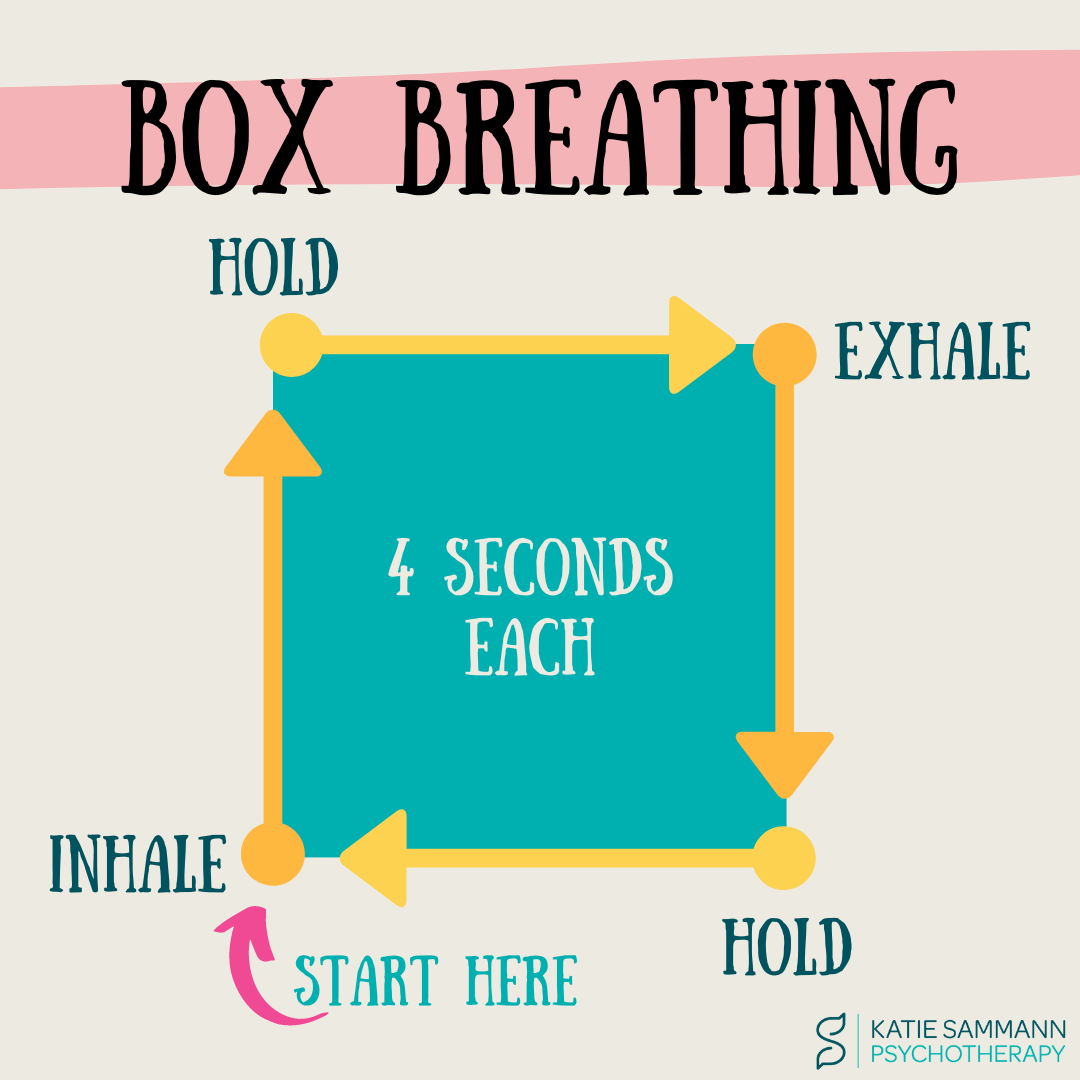Box Breathing
Box breathing is a great way to reduce anxiety. Breathing exercises work because they calm the nervous system. As with many breathing exercises, you can do it anywhere without needing anything else. Once you get the hang of it, it can be a great everyday tool to prevent anxiety from getting out of hand. It’s also known as tactical or sniper breathing, and is taught in the military as a way to remain calm in dangerous or otherwise anxiety provoking situations.
It’s very simple:
Breathe in for four seconds
Hold for four seconds
Breathe out for four seconds
Hold for four seconds
Repeat
It’s called box breathing because it can be visualized as tracing the outline of a box. Some people enhance the breathing exercise by tracing a box in the air with their finger; adding an additional physical component to breathing exercises can be really helpful to keep you focused on your breath and not become distracted by anxious thoughts.
As with all skills, and all coping skills, practice helps. The more comfortable you are with this exercise, the easier it will be to use it when you need it. Many people will make time to do breathing exercises each day, especially in the morning to prepare for the day. It helps clear your mind and calm your nervous system before you start your day, so you go into it primed to be able to tackle whatever comes your way.
Some teens I work with who are currently enrolled in online school will do this (or other breathing/grounding exercises) before they join the video meeting. This can be helpful to any student, but it can be particularly helpful for those with social anxiety. It can make them feel a little more centered and confident before turning their camera on.
Give it a shot now: In for four. Hold for four. Out for four. Hold for four. Repeat three more times. If you felt even a little calmer, consider trying to use this exercise more often. You can even modify it to suit you better by increasing the number of seconds. You could decrease them a bit too, but I wouldn’t suggest going any lower than three seconds. We don’t want to speed up your breathing faster than normal, that may have the opposite effect!
If this exercise isn’t for you, there are plenty more out there to try! Follow me on Instagram, I post a new coping skill every Monday!

